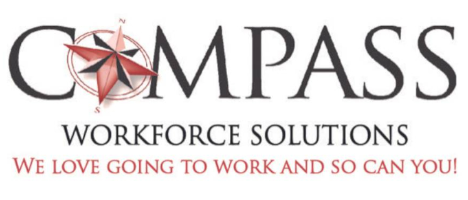[av_post_metadata post_selected=” seperator=’/’ before_meta_content=” after_meta_content=” margin=” margin_sync=’true’ padding=” padding_sync=’true’ av-desktop-margin=” av-desktop-margin_sync=’true’ av-desktop-padding=” av-desktop-padding_sync=’true’ av-medium-margin=” av-medium-margin_sync=’true’ av-medium-padding=” av-medium-padding_sync=’true’ av-small-margin=” av-small-margin_sync=’true’ av-small-padding=” av-small-padding_sync=’true’ av-mini-margin=” av-mini-margin_sync=’true’ av-mini-padding=” av-mini-padding_sync=’true’ align=’left’ custom_title=” size=” av-desktop-font-size=” av-medium-font-size=” av-small-font-size=” av-mini-font-size=” alb_description=” id=” custom_class=” template_class=” av_uid=’av-lhv52qvr’ sc_version=’1.0′ admin_preview_bg=”]
[av_metadata_item metadata=’published’ before_meta=” after_meta=” link_meta=’default’ link_target=” av_uid=’av-lhv52orp’ sc_version=’1.0′]
[av_metadata_item metadata=’categories’ before_meta=’in’ after_meta=” link_meta=’default’ link_target=” av_uid=” sc_version=’1.0′]
[/av_post_metadata]

Your heart sinks – you just lost a valuable team member – but you understand (or you are at least trying to). Once the initial shock subsides, you move into a heightened sense of urgency as this role is critical to the success of your business. You immediately pull the job description from your files, you check the detailed list of the education, experiences, skills, and abilities the ideal candidate should have for this position, and you start your search. This is not a time to wait! Or is it?
The importance of defining the job – Your Job Description
In a fast-paced agile world documents like Job Descriptions are sometimes seen as necessary ‘evils,’ designed to slow us down and existing purely for compliance purposes. But nothing could be further from the truth. Job descriptions lay the groundwork for effectively guiding and managing all our human capital practices, from compensation plans to performance management systems to recruitment and selection programs.
In the realm of recruitment, understanding what we are trying to accomplish by filling a vacancy is the cornerstone upon which the success of all subsequent steps (i.e., finding, selecting, and onboarding a successful hire) rest. That is why it’s critical to always reflect on a couple of key questions and related practices (regardless of whether we have an existing job description at hand).
- What is the work that needs to be done in this position?
Here we need to be thinking in terms of responsibilities, tasks, and deliverables to the business and not in terms of the person who will be doing them.
- What are the key responsibilities ‘owned’ by or deliverables produced in this role?
Here the qualifier “key” is key.
We don’t need to include every minute or once-in-a-blue-moon task we would like to see performed by whoever is occupying this role … that is why the ubiquitous phrase of “Other tasks as assigned” was invented.We will be best served if we don’t include every detail of how and what is to be performed in pursuit of the outcomes we want to see accomplished by the role. As the world of work continues to shift and change at an unprecedented pace, such detailed specifications will only render our document obsolete before we even get it through the approval process.
Once we have a clear picture of what needs to be done, within what context and to what end, then it is time to shift our focus to what does it take to get this work done successfully.
The importance of defining the person – Your Person Specifications
If the job description is the cornerstone of all our human capital practices, our person specification is the compass that will guide our acquisition and selection strategies in our quest to hire the right person for our open position.
Our task here is to delineate the characteristics a person needs to have to successfully perform in the specific role within our company. The Predictive Index, a suite of tools designed to support our people practices across the entire employee life cycle, offers a great framework for tackling this task. As we look at the work to be done and outcomes to be achieved, we can think of prerequisite individual characteristics across three domains:
- The Head – What are the behaviors that will render someone successful in this role? What cognitive abilities, thinking and information processing styles or learning agility one must possess to effectively deliver what is expected in this role?
- The Heart – What are the values, interests and motivations that will align someone with our company’s mission, vision, values, and expectations around how we carry out our work?
- The Briefcase – What are the functional/technical competencies and knowledge, the relevant skills and the experiences that will render someone successful in this type of role?
Once we have identified characteristics across these three domains, it is time for us to go back and critically examine them to ensure they are all essential to successful performance. All too often we fall prey to thinking a “nice to have” (e.g., degree from an Ivy League school) is a “must have” – for each characteristic identified, we need to ask why. Why is this requirement important? What does it bring to the table and how does it impact one’s ability to deliver to the objectives set for the role? Engaging in this process and gaining clarity around what is essential vs. not is not of trivial consequence in our search process. This is a step that fundamentally impacts how wide or narrow our potential pool of candidates will ultimately be.
Takeaway Thoughts
In an employment market that, based on February 2022 statistics, has seen near record highs on both resignations and job openings, it is imperative to act with speed when it comes to filling our open positions. But speed without clarity on what a successful hire will look like will end up costing us both time and money over the long term.
Available research on new hire success continues to show that about half of new hires, regardless of level, usually fail within 18 months and they tend not to fail only because of what they know. Such findings highlight the critical importance of taking the time upfront to clearly define and understand the work to be done, the context within which the work is going to be performed, and the characteristics that render a new hire successful in that role within our company. Armed with that deep understanding and laser focus, we are ready to build our strategy for going out to the marketplace to attract, select and onboard the right next hire for our open role.
If you need assistance in creating or updating job and/or person specifications for your company’s critical functions or roles and setting yourself up for success in finding your right next hire, reach out to connect with one of our expert staff.








